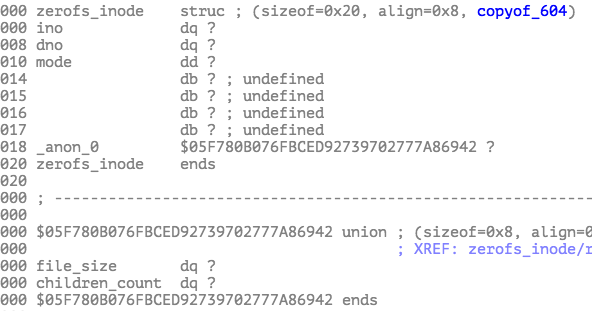\
'''
Created on 2014年11月29日
@author: yf
'''
from zio import *
import re
import time
io = zio('./qoobee4')
\
lose_dic = \['scissor','rock','paper'\]
right_dic = \['paper', 'scissor','rock'\]
divset = \[17, 16, 18, 19, 21, 22,23,24,25,26,27,28,29,30, 32 , 33 , 34 , 35 , 35 , 36 , 37 , 38 , 39 , 40\]
rightset = \[\]
flag = ''
def losenum(modnum):
return (modnum-1+3)%3
\
\
\
\
\
\
\
\
\
\
\
\
\
\
\
\
\
\
pattern = re.compile(r'(d+)!',re.M)
def checkround2():
log('enter checkround')
rst = {}
io.read_until('Select one:')
io.writeline('paper')
buf = io.read_until('n')
if 'lose' in buf:
log('lose')
modnum = 2
io.writeline('0')
buf = io.read_until('Bye!')
log(buf)
divnum = int(pattern.findall(buf)\[0\])
log('divnum:%d' % divnum)
elif 'paper' in buf:
log('tie')
return '$'
modnum = 1
io.read_until('Select one: ')
io.writeline('1234')
io.read_until('number(0-100)? ')
io.writeline('0')
io.read_until('Your Choice: ')
io.writeline('7')
for i in rightset:
log(i)
log(right_dic\[i\])
io.read_until('Select one:')
io.writeline(right_dic\[i\])
io.writeline('scissor')
io.read_until('number(0-100)?')
io.writeline('0')
buf = io.read_until('n')
divnum = int(pattern.findall(buf)\[0\])
log('divnum:%d' % divnum)
elif 'rock' in buf:
log('win')
return '$'
modnum = 0
io.read_until('Select one: ')
io.writeline('1234')
io.read_until('number(0-100)? ')
io.writeline('0')
io.read_until('Your Choice: ')
io.writeline('7')
for i in rightset:
log(i)
log(right_dic\[i\])
io.read_until('Select one:')
io.writeline(right_dic\[i\])
io.writeline('paper')
io.read_until('number(0-100)?')
io.writeline('0')
buf = io.read_until('n')
divnum = int(pattern.findall(buf)\[0\])
log('divnum:%d' % divnum)
r = divnum*3 + modnum
log ("char is %d,'%c'" % (r,chr(r)))
rightset.append(modnum)
log('out checkround')
return chr(r)
def checkround3():
log('enter checkround')
rst = {}
io.read_until('Select one:')
io.writeline('scissor')
buf = io.read_until('n')
if 'lose' in buf:
log('lose')
modnum = 0
io.writeline('0')
buf = io.read_until('Bye!')
log(buf)
divnum = int(pattern.findall(buf)\[0\])
log('divnum:%d' % divnum)
elif 'scissor' in buf:
log('tie')
return '$'
modnum = 2
io.read_until('Select one: ')
io.writeline('1234')
io.read_until('number(0-100)? ')
io.writeline('0')
io.read_until('Your Choice: ')
io.writeline('7')
for i in rightset:
log(i)
log(right_dic\[i\])
io.read_until('Select one:')
io.writeline(right_dic\[i\])
io.writeline('scissor')
io.read_until('number(0-100)?')
io.writeline('0')
buf = io.read_until('n')
divnum = int(pattern.findall(buf)\[0\])
log('divnum:%d' % divnum)
elif 'paper' in buf:
log('win')
return '$'
modnum = 1
io.read_until('Select one: ')
io.writeline('1234')
io.read_until('number(0-100)? ')
io.writeline('0')
io.read_until('Your Choice: ')
io.writeline('7')
for i in rightset:
log(i)
log(right_dic\[i\])
io.read_until('Select one:')
io.writeline(right_dic\[i\])
io.writeline('paper')
io.read_until('number(0-100)?')
io.writeline('0')
buf = io.read_until('n')
divnum = int(pattern.findall(buf)\[0\])
log('divnum:%d' % divnum)
r = divnum*3 + modnum
log ("char is %d,'%c'" % (r,chr(r)))
rightset.append(modnum)
log('out checkround')
return chr(r)
def forlast2():
global flag
log('last round')
io.read_until('Your Choice: ')
io.writeline('7')
for i in rightset:
log(i)
log(right_dic\[i\])
io.read_until('Select one:')
io.writeline(right_dic\[i\])
c = checkround3()
if c:
flag += c
log('flag:%s' % flag)
def forlast():
global flag
log('last round')
io.read_until('Your Choice: ')
io.writeline('7')
for i in rightset:
log(i)
log(right_dic\[i\])
io.read_until('Select one:')
io.writeline(right_dic\[i\])
c = checkround2()
if c=='$':
forlast2()
elif c:
flag += c
log('flag:%s' % flag)
def round():
global flag
for j in range(32):
log('new round')
io.read_until('Your Choice: ')
io.writeline('7')
for i in rightset:
log(i)
log(right_dic\[i\])
io.read_until('Select one:')
io.writeline(right_dic\[i\])
c = checkround()
if c=='$':
forlast()
elif c:
flag += c
log('flag:%s' % flag)
def checkround():
log('enter checkround')
rst = {}
io.read_until('Select one:')
io.writeline('rock')
buf = io.read_until('n')
if 'lose' in buf:
log('lose')
modnum = 1
io.writeline('0')
buf = io.read_until('Bye!')
log(buf)
divnum = int(pattern.findall(buf)\[0\])
log('divnum:%d' % divnum)
elif 'rock' in buf:
log('tie')
modnum = 0
if len(rightset)==31:
return '$'
io.read_until('Select one: ')
io.writeline('1234')
io.read_until('number(0-100)? ')
io.writeline('0')
io.read_until('Your Choice: ')
io.writeline('7')
for i in rightset:
log(i)
log(right_dic\[i\])
io.read_until('Select one:')
io.writeline(right_dic\[i\])
io.writeline('scissor')
io.read_until('number(0-100)?')
io.writeline('0')
buf = io.read_until('n')
divnum = int(pattern.findall(buf)\[0\])
log('divnum:%d' % divnum)
elif 'scissor' in buf:
log('win')
modnum = 2
if len(rightset)==31:
return '$'
io.read_until('Select one: ')
io.writeline('1234')
io.read_until('number(0-100)? ')
io.writeline('0')
io.read_until('Your Choice: ')
io.writeline('7')
for i in rightset:
log(i)
log(right_dic\[i\])
io.read_until('Select one:')
io.writeline(right_dic\[i\])
io.writeline('paper')
io.read_until('number(0-100)?')
io.writeline('0')
buf = io.read_until('n')
divnum = int(pattern.findall(buf)\[0\])
log('divnum:%d' % divnum)
r = divnum*3 + modnum
log ("char is %d,'%c'" % (r,chr(r)))
rightset.append(modnum)
log('out checkround')
return chr(r)
\
def p7():
\
\
\
\
\
\
\
\
try:
round()
except TIMEOUT:
print flag
\
def main():
reg=re.compile(r'have (d+) donuts')
reg_level=re.compile(r'Exp: d+/(d+)')
time1 = time.time()
\
io.read_until('Choice:')
io.writeline('1')
io.read_until('Name:')
io.writeline('1')
io.read_until('Age:')
io.writeline('1')
io.read_until('(30 bytes):')
io.writeline('%8888u%8888u%4u%4u%4u%4u%n')
total=0
Level=0
io.read_until('Choice:')
while Level<49:
while total<1000:
io.writeline('3')
r = io.read_until('?')
ind = r.index('Amount')
Amount = int(r\[ind+6:ind+8\])
io.writeline(str(Amount))
total+=Amount
r = io.read_until('Choice:')
if 'Sorry' in r:
total-=Amount
io.writeline('2')
io.read_until('Choice:')
while total>0:
if len(reg\_level.findall(r))>0 and 500 == int(reg\_level.findall(r)\[0\]):
print reg_level.findall(r)
Level=49
break
io.writeline('4')
r = io.read_until('?')
have=int(reg.findall(r)\[0\])
if have>=9:
have = 9
total-=have
io.writeline(str(have))
time2=time.time()
print time2-time1
p7()
f = open('flagset','a')
f.write(flag+' '+time.strftime('%H:%M:%S',time.localtime(time.time()))+'n')
f.close()
print 'thread over with flag:%s' % flag
if \_\_name\_\_ == '\_\_main\_\_':
main()






